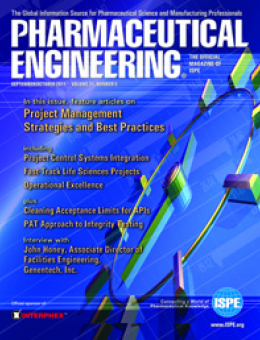
Downloads
Project Management Best Practices: Improving Schedule Using a Distributed Workforce
by Mark Albano, Bruce Kane, and Robert Thomas
This article presents more than a decade of project management learning about distributing a project workforce and the limits and risks of over distribution.
The Science of Project Management: Project Controls Systems Integration
by Frederick Cramer, Susanne Keller, Christopher Law, Thomas Shih, and Britton Wolf
The article presents the implementation of a suite of software packages that together provide a total Enterprise project management system.
Project Management Strategies for Multi-Company Project Teams
by Mark Mathis
This article presents methods and tools for successfully managing projects where team members are from multiple and sometimes competing organizations.
Industry Interview Series: John Honey, Associate Director of Facilities Engineering, Genentech, Inc.
by Keith Gibbs
John Honey provides insight into Genentech’s approach to delivering capital projects and shares his own perspectives on important issues in the field of project management.
Cleaning Validation for the 21st Century: Acceptance Limits for Active Pharmaceutical Ingredients (APIs): Part II
by Andrew Walsh
This article discusses how to establish true science-based limits using data from clinical and toxicological studies, a risk-based approach to evaluating cleaning validation data, and guidance on setting statistical process control limits from that data.
Fast-Track Life Sciences Projects: When to Use Design-Assist and Why It Works
by Raj Vora, P.E.
This article presents strategies to engage in life science projects from a schedule, quality, and budget standpoint – all with “speed to market” in mind.
Using Operational Excellence to Meet the New Process Validation Guidance
by Bikash Chatterjee, Peter Rafa, and Wai Wong
This article presents a framework for executing the three stages of process validation, employing the philosophies and methodologies of Operational Excellence (OpEx).
A Novel Process Analytical Technology Approach to Automated Pharmaceutical Container Closure Integrity Testing
by Emiliano Niffoi and Andrea Simonetti
This article provides an overview of Process Analytical Technology (PAT) methodology application to an automated equipment developed for 100 percent Container Closure Integrity Testing (CCIT) of pharmaceutical items.